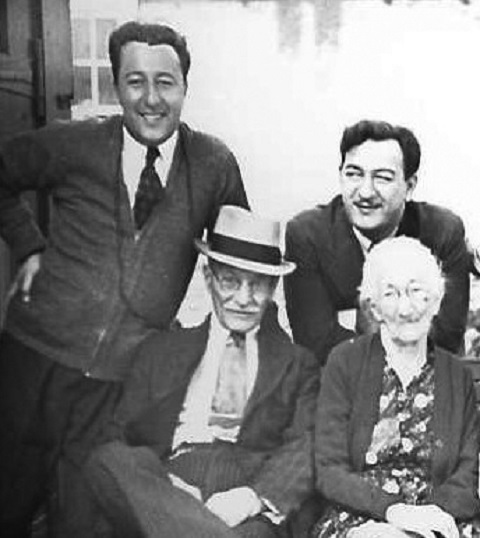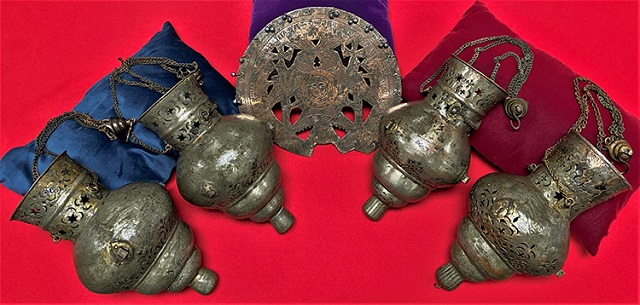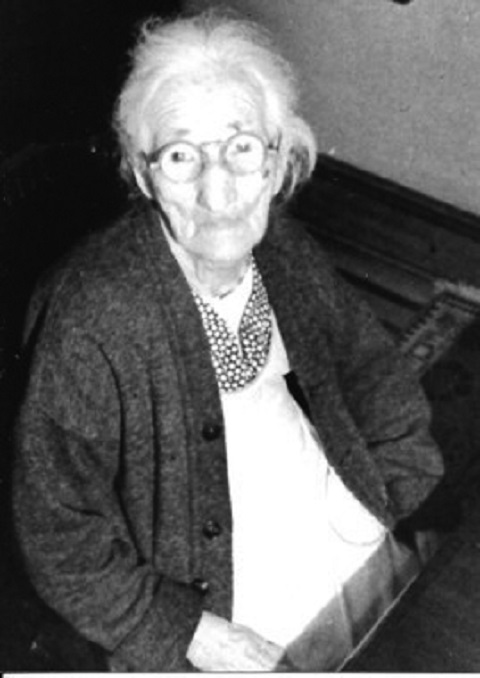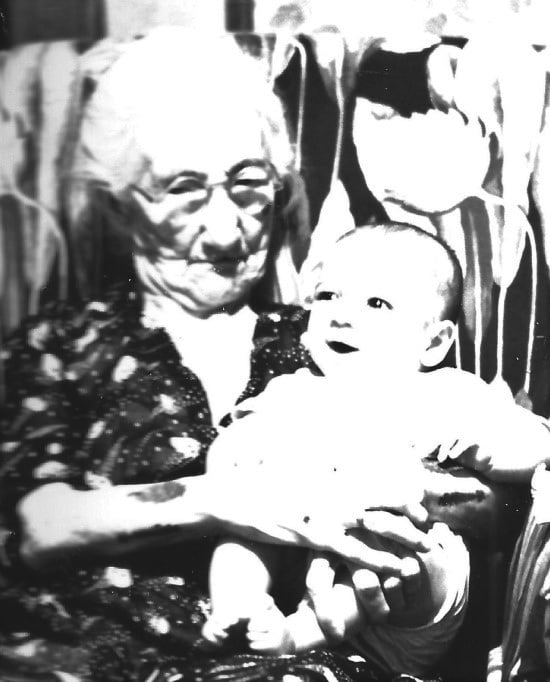By Ruth Bedevian
My paternal great-grandmother passed into her eternal rest when I was 8 months old. Anna Najimian is sleeping in Flower Hill Cemetery in North Bergen, NJ. Indeed, she is far from her birthplace of Dikranagerd, the ancient city founded by Tigranes the Great, and ruled by Sultan Abdul Hamid II, ruler of the Ottoman Empire at the time of her birth (circa early 1840s).
In 1900 Hajimom arrived at Ellis Island with an identification tag pinned to her coat. Her 12-year-old grandson, Khoren, her newly remarried daughter, Soghome and son-in-law Shahpaz Shahbazian were temporarily living in a boarding house in Pawtucket, Rhode Island. The manifest states that her destination was 110 Buffalo Avenue, Paterson, NJ. It was the residence of the Najimian family where her brothers had settled. She was born Najimian; her married surname was Bakalian, but she was entered into the US records as Najimian.
Read also
Like so many survivors, she neither spoke of nor obsessively lingered on the horrors she suffered when she was violently widowed. Two Turkish soldiers had entered her home and slaughtered her husband and two sons before her eyes during the Hamidian Massacres (1894-1896) in the southeastern provinces of the Ottoman Empire. Chaos prevailed in the household and the surviving spouses and children scattered for refuge.
Thus, our family history is buried with the victims and therefore begins with Hajimom in the New World and with her new life with which she was graced by Providence.
A Legacy of Love
I cannot remember feeling the warmth of her embrace nor the soft kisses upon my forehead since I was very young. Nevertheless, I have felt the blessings of her goodness and love all the days of my life.
My earliest memories are stories of Hajimom told to me on the long Sunday afternoon drives when my parents, Karnig and Alice, would delight my brother and me with their narrations. More stories overflowed from uncles, aunts and older cousins to the point of my perfect enthrallment of her “sainthood.”
Her moniker derived from being a haji (pilgrim) as evidenced by the blue tattoo that she bore upon her right arm and from being the surrogate mom. The affectionate designation disclosed a natural blend of the Old World from which she came and the New World to which she acclimated. To everyone in the family, she was endearingly addressed as Hajimom.
Soghome labored in the textile factories to supplement the nickels and dimes that Shahpaz brought home from haircuts and shaves. Industrious, Khoren (who assumed the surname Shahbazian from his step-father) started an elastic braid manufacturing business. Soghome invested her meager savings with her oldest son and left the textile factories to work in Khoren’s small mill in hopes for him to succeed. Hajimom’s firstborn grandson was destined to become successful and in later years his benevolence was bountiful, purchasing and renovating an old theater and donating it to the Holy Cross Armenian Church in Union City, NJ where a bronze plaque still adorns the wall with his image and name.
With Soghome’s absence from the day to day duties in the household, Hajimom’s responsibilities grew to become the stay-at-home surrogate mother. She tenderly and lovingly nurtured her three younger grandsons to adulthood. Soghome bore three sons to Shahpaz – Lud (1902), Vasken (1904) and the baby, Karnig (1909).
A Growing Family
My mother came from Pawtucket, RI to live in the upstairs apartment of the two-family house at 511 Dewey Avenue in Cliffside Park, NJ when she married my father in 1930. In the first year of the Great Depression, the house was already occupied by Soghome, Shahpaz, Hajimon and my father. Khoren, was married to Mary Esperian of Haverhill, MA in 1912 and lived elsewhere.
Hajimom was a grand old lady, as my mother described her, “She was filled with wisdom and gentleness. She was very clean and neat. She wore separate cuffs that covered her dress sleeves up to her elbows so that she would not stain her clothing while going about her chores. She had long, snow-white hair that she combed carefully and tied into a soft knot at the nape of her neck.”
Karnig liked to brag, “She rolled her own cigarettes. Smoking never hurt Hajimom. She lived to be 100.”
Uncle Lud, who was famous for his humor, told his story. “Booboo Dye-ee, Hajimom’s bachelor brother, came to visit for a week. When evening came Hajimom attempted to help him unpack. She was dumbfounded. There were no socks, no underwear, no clothes! The suitcase was packed full with bottles of homemade arak!”
Aunt Joey recalls with a smile, “We all loved Hajimom. I did many foolish things, but she never yelled at me. She simply said, “Jaheel eh. Jaheel eh. Ge medzna.” (She’s immature, immature. She’ll grow up.)
Cousin Janet admired her wisdom, “When Shahpaz would throw himself into a violent rage, she would say, “Okoud choonee.” (It’s no use!) “She possessed good sense to overcome the Baron’s tirades.”
Cousin Margaret recalls with a smile, “I took the train from Providence to visit Alice and was given Hajimom’s bed to sleep. She had a very bumpy mattress and I had a very uncomfortable night .I asked how Hajimom could sleep in that bed because she had a dainty body.” The bumpy mattress mystery was solved when it was revealed that Hajimom had hidden bottles of arak from Shahpaz to impose a curb upon his drinking.
Alice remembers, “Hajimom saw that a large water rat had crept into the upstairs quarters of the house and was roaming from room to room. She said nothing because I was pregnant and she did not want to excite me for fear that I might miscarry the baby.”
Alice continued, “Karnig and I had returned from seeing King Kong, a very popular movie about a gorilla who was captured in Africa and brought to New York City in a cage. He escapes and there is a famous scene where he is roaring from the top of the Empire State Building.”
“My eyes fell upon something black under the radiator in the bedroom as I was undressing. Thinking that Karnig had dropped a sock, I went closer to pick it up.”
Suddenly the “sock” stretched to its full length, wiggled, then darted passed Alice, brushing his furry body against her ankles in its flight.
“Karney, there’s a rat. A big, black rat!” Alice’s piercing screams propelled Karnig from the living room where he had been reading the newspaper. “Aww, you’re nuts. You just saw King Kong!”
“Shhh. Irav. Irav.” Hajimom whispered, “Sheedag eh.” (It is true, it is true. She is right.)
Hajimom interjected, “Baron and I have been trying to find it these past few days.” Alice recalls, “Then Karney believed me. Everything his grandmother said, he believed.”
Karnig chased the rat, finally plunging after it into the living room chair. He and Shahpaz chased the rat and got rid of it.
When the excitement was over, Hajimom confided to Alice, “One night the rat woke me up. You know, I am not used to someone in my bed!”
Food from the Heart
The kitchen was Hajimom’s domain and she reigned as queen. Alice, whose Roupenian clan hailed from Kharpet, learned to cook the Dikranagerdtsi style foods by watching her. Hajimom’s “Dzedzodz” is a Shahbazian family tradition and Thanksgiving Day is not complete without a steaming tray of it set upon the table. It is a mixture of wheat and seasoned meat, a recipe that I have not been able to find in a dozen Armenian cookbooks! It must be particularly Dikranagerdtsi or truly Hajimom’s specialty.
Alice was also learning how to bake from her neighbor. They struck up a friendship and Mrs. Jeffreys would call up to Alice, “Come on down. I’m baking a cake.” Alice would experiment with recipes. One day she taught Hajimom to bake an American-style cake. Curious to experiment and learn, Hajimom mixed two eggs with milk, sugar, and flour in a bowl and poured the batter into an enamel pan. The edges curled and burned. Her hands trembled from old age and she did not see well, but she baked the cake and everyone ate it.
Karnig was also fond of telling the story of how Hajimom would bake the shak-ar-ee-shees (butter cookies) and hide them by locking them in the bottom drawer of the dresser. Karnig would pull out the drawer above and eat them. He laughed and laughed at his grandmother’s bewilderment. She could not comprehend how they were missing when she had locked the drawer so securely.
Hajimom taught her grandsons to pray. She taught them a traditional prayer to be recited before sleep. Each grandson learned it, but it was Vasken who learned it best – so well, that each time he saw his brother Lud in adult years, he would recite the prayer in perfect Dikranagerdsti when Lud would ask him. Vasken translated this prayer for his daughters, Joannie and Mary in 1985, one year before his death.
I lay my head down on the pillow. My soul I give to the angel. Angel, you keep me well, so the Devil will not fool me. Saints Michael and Raphael, give me the strength so I can go into Heaven and work for the Lord.
Hajimom was ailing for two weeks. Simply tired, her age was slowing her down. Joey invited her, “It’s too hard for Alice with the children. Come by me and I’ll take care of you.” Hajimom sighed, “Hankisd em hoss.” (I am comfortable here.) “I look out the window and watch the children play and I am happy here.”
She confided in her grandson Karnig, “Joey says I should go by her. It’s too hard for Alice. If you want me to go, I will go.” Karnig assured his beloved grandmother, “Hajimom, this is your home. You are no trouble for Alice.”
Hajimom thoughtfully nodded her head and made her final decision, “Yavroom, Nantz eh gemenam.” (My child, in that case, I stay.)
Grandmother and grandson had a special understanding and Karnig would listen and respond to his grandmother before all others. Their trust in each other was indestructible and tender.
No one can recall seeing Hajimom angry. Alice remembers the nearest she came to showing disapproval was about two years after Hajimom’s nephew’s wife, Lucia, had passed away. “Tookman brought a red-headed woman to visit us one evening. They were laughing and drinking in the living room. Hajimom quietly smoked her cigarette and when they left, she muttered softly, ‘Inch hede’ perav!’ (What did he bring?’)
“Living with Hajimom was a charming time in my life,” Alice recalls. She remembered the day Hajimom died, “She passed like the flickering flame of a candle, so gently during her afternoon nap.”
How Karnig loved Hajimom. Alice vividly remembered Karnig sobbing when Hajimom was being laid to rest “The world will never be the same,” he grieved. He carried a snapshot of her in his wallet for the rest of his life. The night of his death, the nurse in the hospital emergency room emptied his pockets and handed the contents to Alice. There was Hajimom’s snapshot among his personal belongings. He was one month short of his 77th birthday. I believe his grandmother’s spirit was present to greet him on the threshold of his new journey and to comfort and assure those he was leaving behind.
Lud, Vasken and Karnig were blessed with being reared by their grandmother. She was their greatest legacy for they were graced in their formative years with a soul who was gifted with the fruits of the spirit –love, peace, joy, patience, gentleness, goodness and faith. The good works they rendered in their own lives were sown from this peaceful, modest soul who knew neither reading, nor writing – simply love for her family, common sense to deal with reality, understanding of the young, kindness and respect for others, and tolerance towards the ugly-mannered.
****
Over 125 years have passed since the Hamidian Massacres violently and brutally erased the trace of my family history. It is, however, ultimately the noble and righteous good that always remains. My Hajimom fills my heart.
(Ruth Bedevian is a resident of New Jersey. She received the Ellis Island Medal of Honor in 2017. She is a longtime member of the Armenian International Women’s Association.)
Main photo: Hajimom with her grandsons and Shahpaz Shahbazian


























































